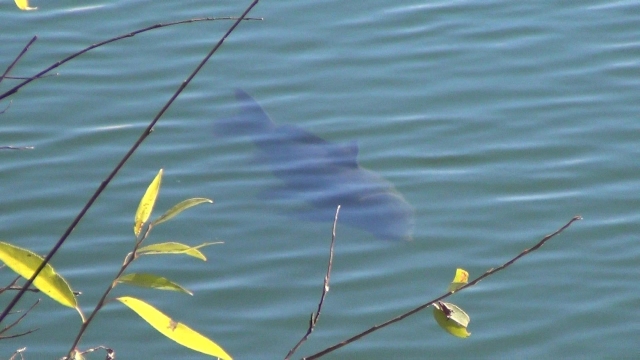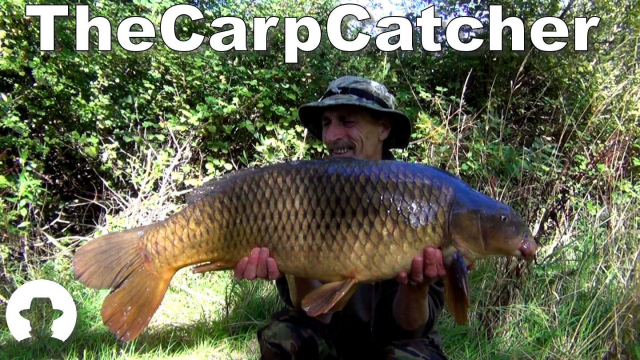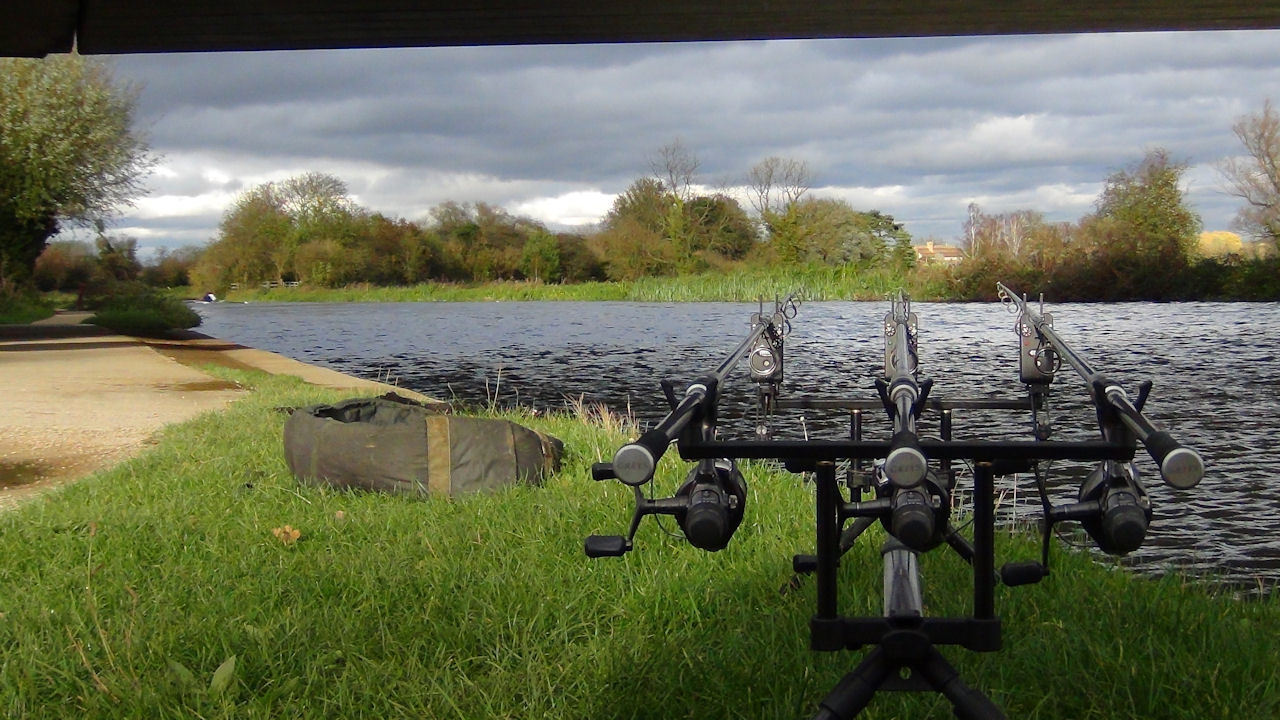
There probably isn't a river, drain or canal in England that doesn't contain at least a few carp and some a lot more. Many of these fish have never been fished for and over the years have quietly grown on to rival anything you can catch in a lake. Although river fishing is a challenge it's not an impossible one and the rewards can be amazing. More often than not you will be leaving footprints where others have never trod; you will be breaking new ground and catching dreams.
Since releasing the series River Cam Carp Quest in 2011 I have received many requests for information about river carp fishing and so I have decided to put together this short piece covering the main aspects you need to address.
Since releasing the series River Cam Carp Quest in 2011 I have received many requests for information about river carp fishing and so I have decided to put together this short piece covering the main aspects you need to address.
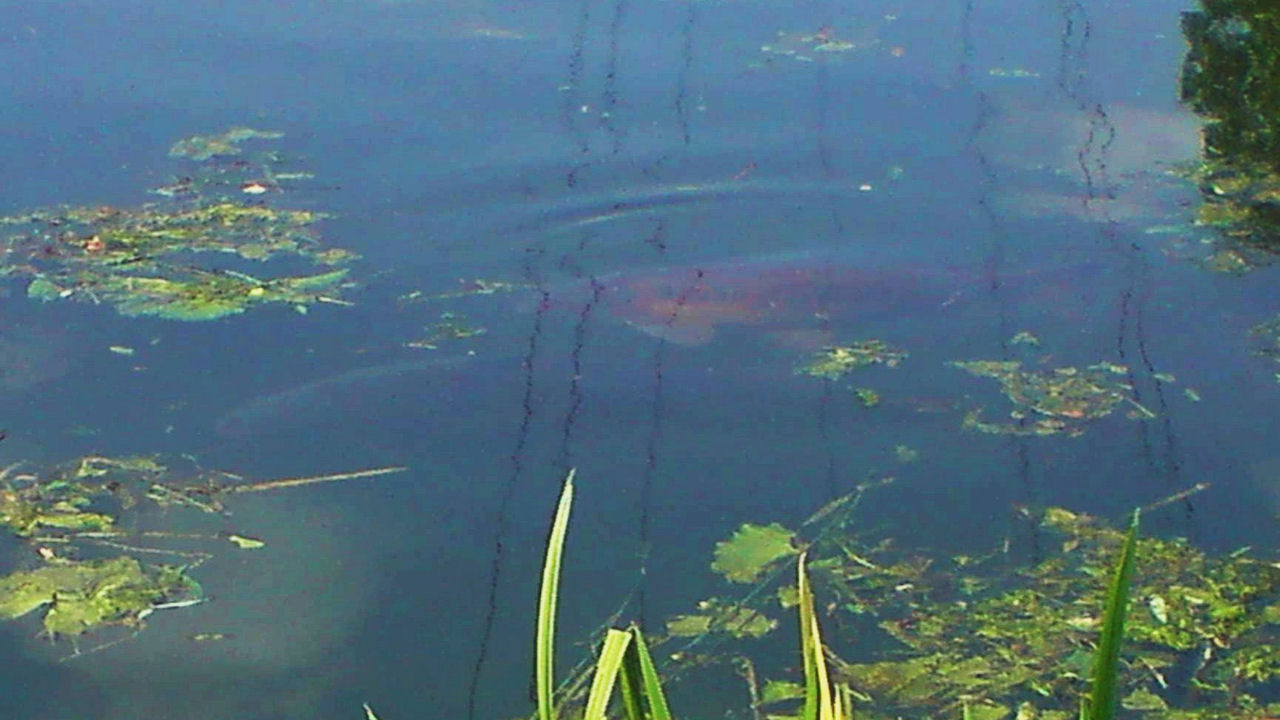
Location:
Finding carp on rivers is even more critical than on lakes and here are a few reasons why.
On a lake you will have a finite amount of bank space and well defined swims to choose from. On a river you have miles of bank space and an endless choice of swims.
On a lake the carp are never very far away from you and in a 24 hour period they can easily visit your swim. On a river the carp can be literally miles from you and you might not see them for weeks.
Most lakes can be walked round in less than an hour. It can take a day just to walk your local stretch of a river.
In lakes the dominate species are usually carp but in rivers it's species like roach and bream.
Finding carp on rivers is even more critical than on lakes and here are a few reasons why.
On a lake you will have a finite amount of bank space and well defined swims to choose from. On a river you have miles of bank space and an endless choice of swims.
On a lake the carp are never very far away from you and in a 24 hour period they can easily visit your swim. On a river the carp can be literally miles from you and you might not see them for weeks.
Most lakes can be walked round in less than an hour. It can take a day just to walk your local stretch of a river.
In lakes the dominate species are usually carp but in rivers it's species like roach and bream.
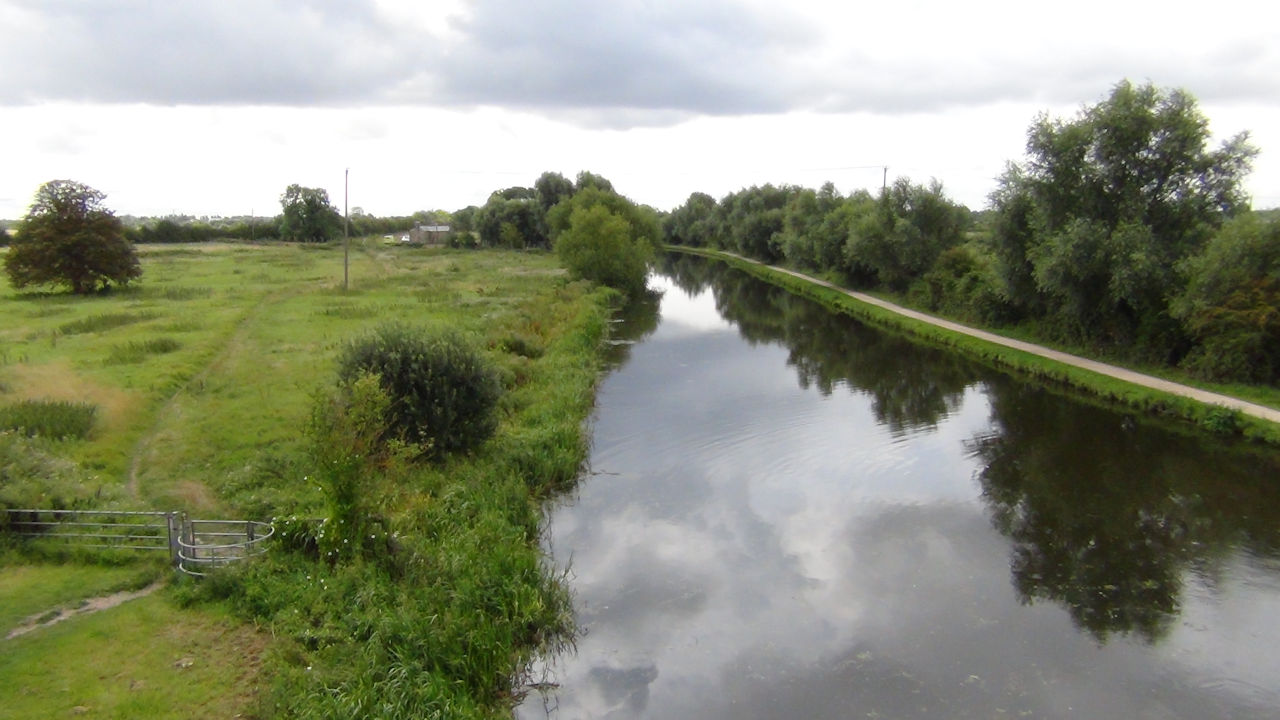
Because of these issues you will need to break the problem down and the best way to do that is to first identify key areas for the location of carp. Once you have done that you can then concentrate your efforts on observing those areas before moving to the next.
Carp use the river like a road traveling up and down from one area to another. Spotting the carp on their travels and following them will often lead you to the area they are currently holding in.
High traffic areas
These are areas where the numbers of carp moving through are at their highest; some are more obvious than others. A sharp bend on a river will divert and push the flow to one side so the margins will see the highest amount of traffic. Obstacles like bridges or fallen trees will divert the flow causing slacks and eddies, places of cover and sanctuary. Boats, marinas and side streams also provide places of cover and sanctuary and correspondingly high traffic at all times of year.
Carp use the river like a road traveling up and down from one area to another. Spotting the carp on their travels and following them will often lead you to the area they are currently holding in.
High traffic areas
These are areas where the numbers of carp moving through are at their highest; some are more obvious than others. A sharp bend on a river will divert and push the flow to one side so the margins will see the highest amount of traffic. Obstacles like bridges or fallen trees will divert the flow causing slacks and eddies, places of cover and sanctuary. Boats, marinas and side streams also provide places of cover and sanctuary and correspondingly high traffic at all times of year.
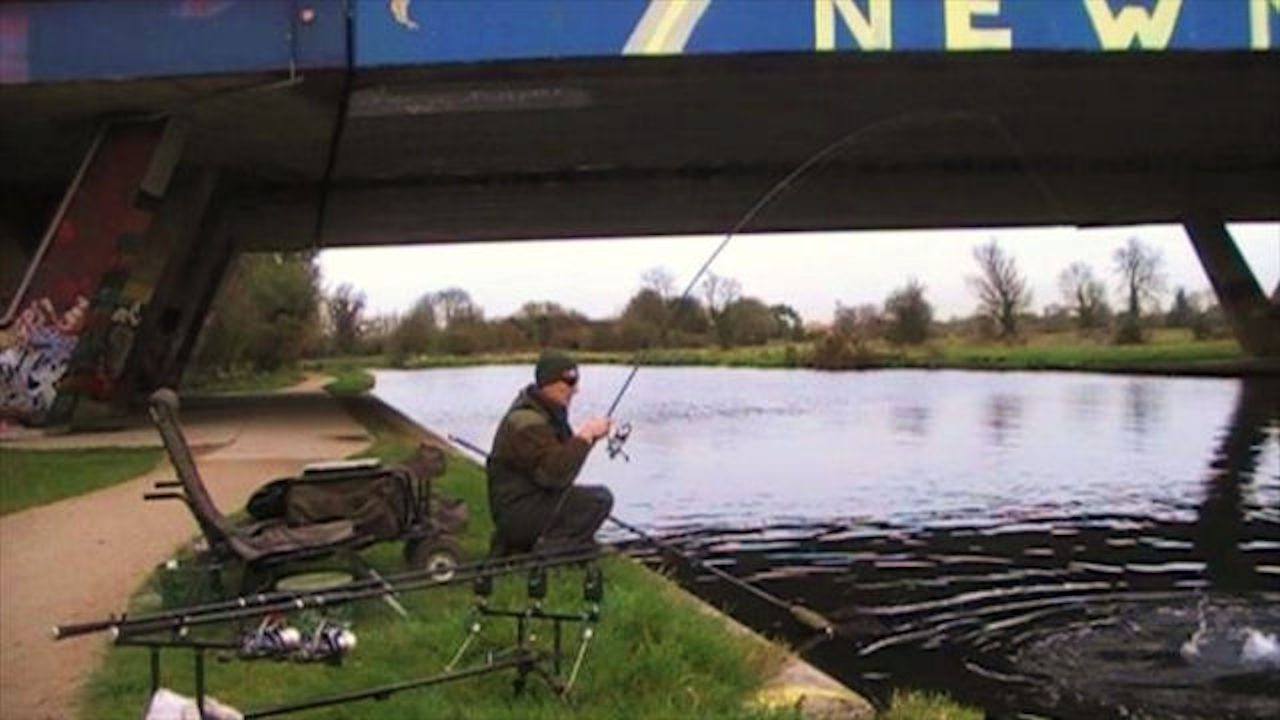
Bridges
These provide cover for the carp where they can feel safe and so can act as a holding area. More often than not the river bed will have been altered to establish the footings of the bridge providing shallow gravely margins. The flow of the river too might have been altered causing eddies and slacks on the leeward side.
Sewer outfall's
The water temperature coming out of one of these is always higher than the river temperature as well as being an effluent both of which the carp find irresistible. For these reasons sewer outfall's are often holding areas that see a high amount of traffic at all times of the year.
These provide cover for the carp where they can feel safe and so can act as a holding area. More often than not the river bed will have been altered to establish the footings of the bridge providing shallow gravely margins. The flow of the river too might have been altered causing eddies and slacks on the leeward side.
Sewer outfall's
The water temperature coming out of one of these is always higher than the river temperature as well as being an effluent both of which the carp find irresistible. For these reasons sewer outfall's are often holding areas that see a high amount of traffic at all times of the year.
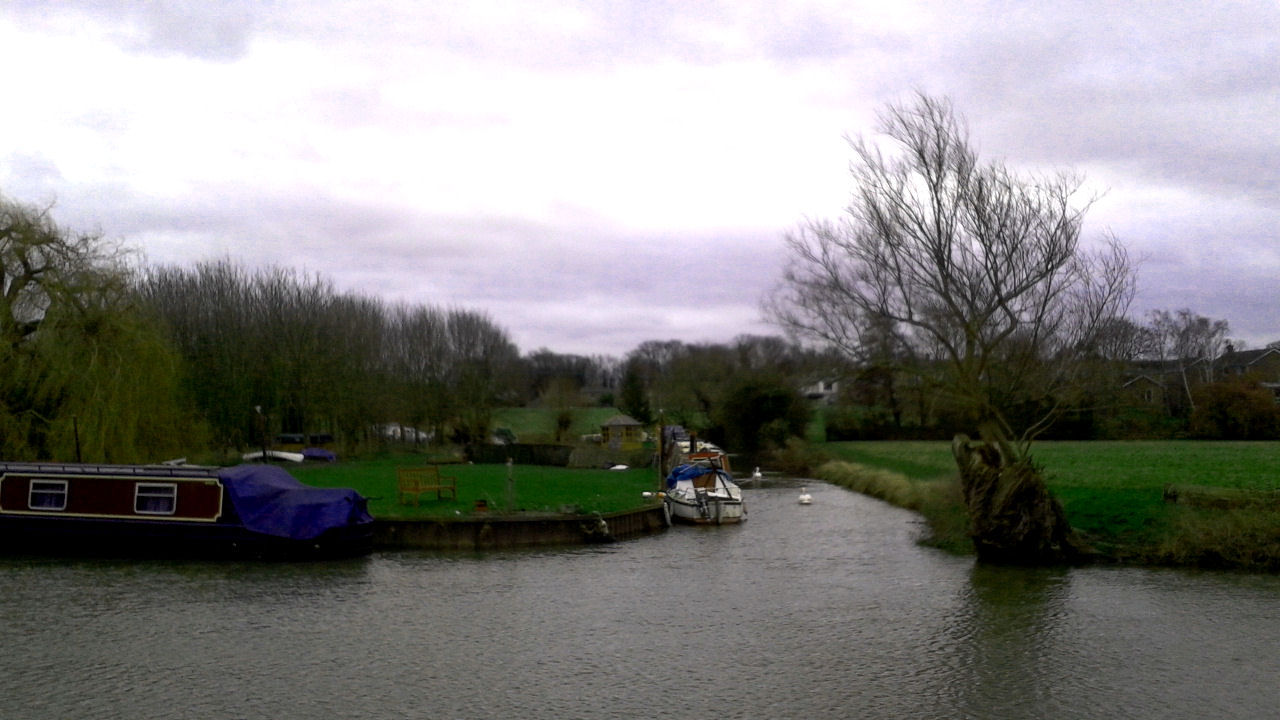
Boats/Marinas
These provide cover for the carp and sanctuary as more often than not they are private areas off the main course of the river. The entrance to such areas can often be a good place to start but also anywhere that's nearby, because they are high traffic areas.
Side streams
As with the marina, these areas provide sanctuary for the carp from the main river and are always worth a go. The entrance to side streams are also good places to start but also if it's a feeder-stream into the main river then anywhere in the flow will also do. Obviously if you can get access to these marinas and side streams then they should also be explored.
These provide cover for the carp and sanctuary as more often than not they are private areas off the main course of the river. The entrance to such areas can often be a good place to start but also anywhere that's nearby, because they are high traffic areas.
Side streams
As with the marina, these areas provide sanctuary for the carp from the main river and are always worth a go. The entrance to side streams are also good places to start but also if it's a feeder-stream into the main river then anywhere in the flow will also do. Obviously if you can get access to these marinas and side streams then they should also be explored.
.jpg)
Bait
As a general rule its best not to use particles as all they will get you is other species like bream, chub and roach. The best approach to target the carp and no other species is boilies, 16mm ones or larger.
Pre-baiting
This is a double edged sword and can cut both ways depending on how you go about it. For instance it can be a great way to enforce or even create a holding area by introducing large amounts regularly. However, if the carp are not entering your swim and cleaning it up then other species will. This could mean that all you ever catch is other species even though you took a boilie approach. So reserve this for areas that you have identified as holding areas, places where you have seen carp or know they visit, and places that are high traffic areas. Often just one good baiting up 24 hours before a session in an area such as this will do the trick and lessen the chance of other species getting in on the act.
As a general rule its best not to use particles as all they will get you is other species like bream, chub and roach. The best approach to target the carp and no other species is boilies, 16mm ones or larger.
Pre-baiting
This is a double edged sword and can cut both ways depending on how you go about it. For instance it can be a great way to enforce or even create a holding area by introducing large amounts regularly. However, if the carp are not entering your swim and cleaning it up then other species will. This could mean that all you ever catch is other species even though you took a boilie approach. So reserve this for areas that you have identified as holding areas, places where you have seen carp or know they visit, and places that are high traffic areas. Often just one good baiting up 24 hours before a session in an area such as this will do the trick and lessen the chance of other species getting in on the act.
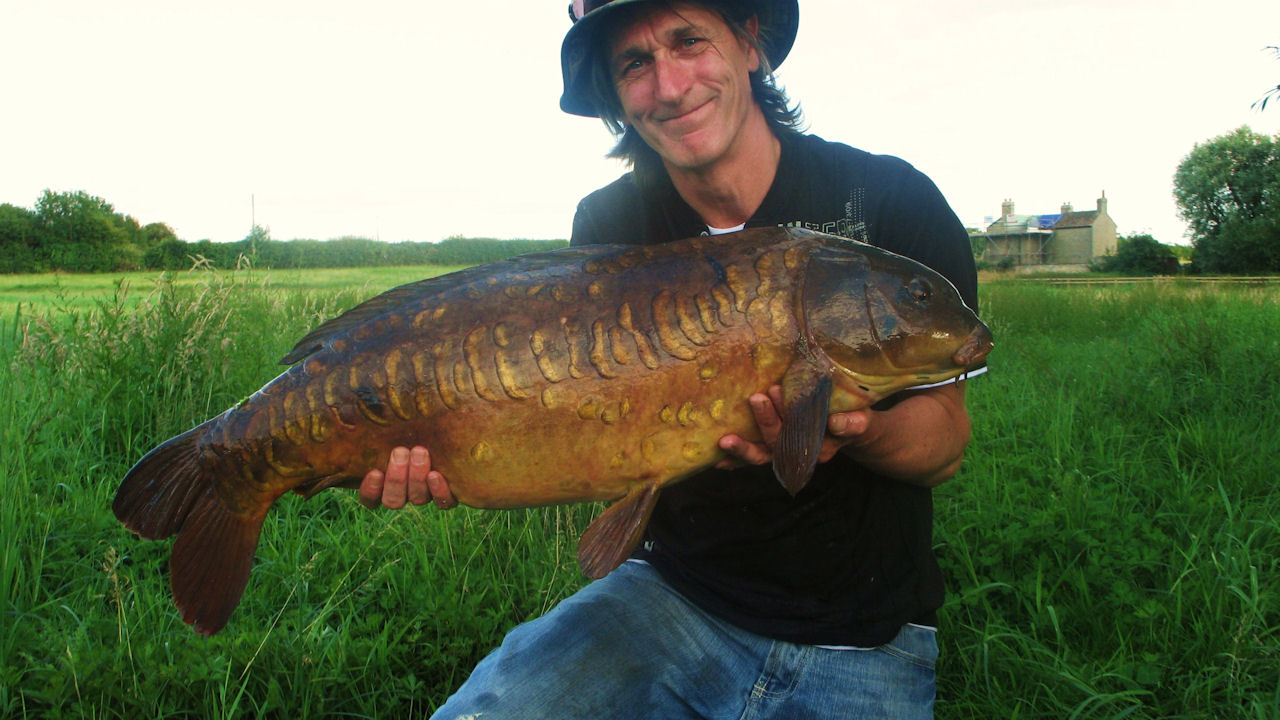
Rigs and setup
I tend to use the same rigs and setup for river fishing as I do with lakes the only difference in the setup being back leads; these are used to keep the line out of the way of boat traffic. Captive leads are best as they release on a take. Use only as much weight as you need to keep the line down and out of the way.
Kit
The only important point to make here is about weight, on rivers it's even more critical than lakes. You might have to travel a long way to get to your swim and more often than not there won't be a path and there will be fences and styles to climb. Using a barrow with everything but the kitchen sink will limit you tremendously so think carefully about the kit you need and the effort required to move it all with you.
I tend to use the same rigs and setup for river fishing as I do with lakes the only difference in the setup being back leads; these are used to keep the line out of the way of boat traffic. Captive leads are best as they release on a take. Use only as much weight as you need to keep the line down and out of the way.
Kit
The only important point to make here is about weight, on rivers it's even more critical than lakes. You might have to travel a long way to get to your swim and more often than not there won't be a path and there will be fences and styles to climb. Using a barrow with everything but the kitchen sink will limit you tremendously so think carefully about the kit you need and the effort required to move it all with you.
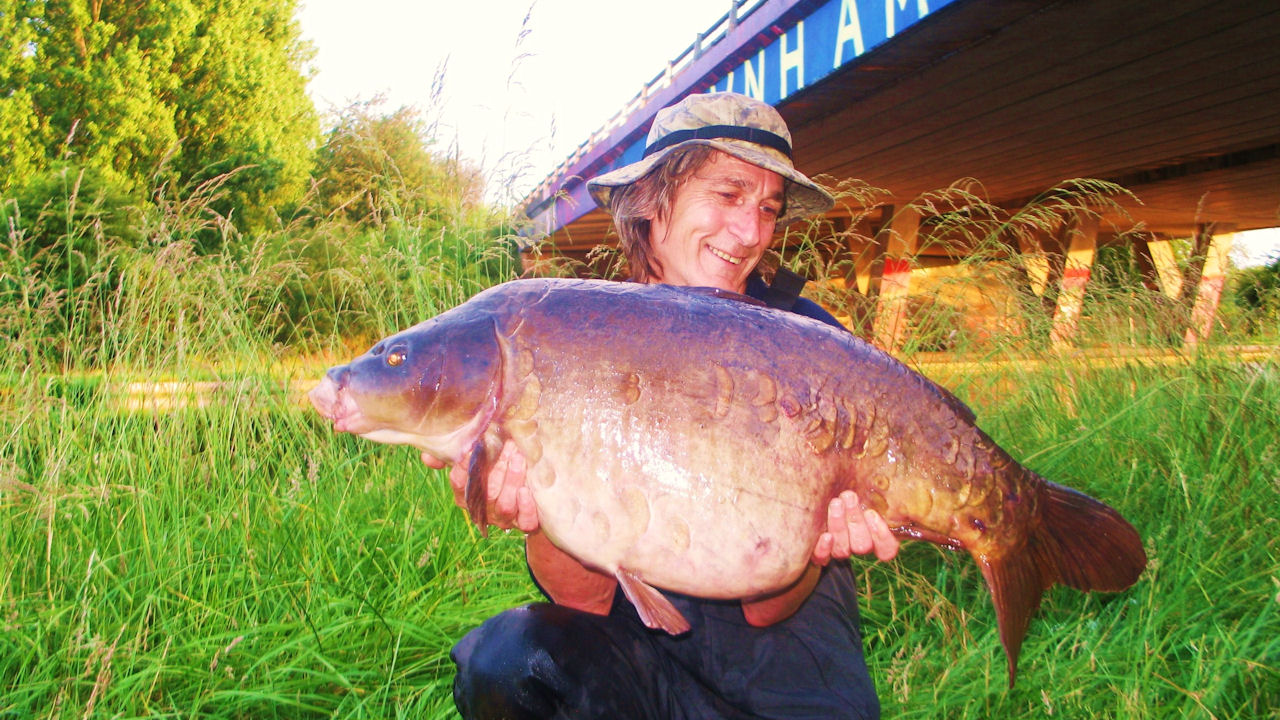
Time
When I fished the River Cam in 2011 I was working full time with only evenings and the odd day off to look for carp and fish. I started in the close season around the beginning of May walking the banks for an hour here and there after work. I had already identified the sewer outfall as a holding area and so it did not take long before I spotted the first carp. Once I had established their presence I began to feed some close in areas every other day and kept my eye on them. After a few weeks I narrowed it down to two spots and the last week before the season I concentrated a larger amount of bait every other night on just the one spot. I arrived in the swim at 4.30 am on the first day of the season June 16th 2011 and caught Bullseye at 34.8lb within a few minutes of casting out.
Time spent walking, observing and feeding areas, four weeks; time spent catching the fish, one hour.
Obviously there is a lot more to fishing rivers than this brief outline but for any of you that are thinking of getting started this advice should help you on your way and hopefully put a river carp on the mat for you.
When I fished the River Cam in 2011 I was working full time with only evenings and the odd day off to look for carp and fish. I started in the close season around the beginning of May walking the banks for an hour here and there after work. I had already identified the sewer outfall as a holding area and so it did not take long before I spotted the first carp. Once I had established their presence I began to feed some close in areas every other day and kept my eye on them. After a few weeks I narrowed it down to two spots and the last week before the season I concentrated a larger amount of bait every other night on just the one spot. I arrived in the swim at 4.30 am on the first day of the season June 16th 2011 and caught Bullseye at 34.8lb within a few minutes of casting out.
Time spent walking, observing and feeding areas, four weeks; time spent catching the fish, one hour.
Obviously there is a lot more to fishing rivers than this brief outline but for any of you that are thinking of getting started this advice should help you on your way and hopefully put a river carp on the mat for you.
For more information and further reading follow the #tags and these links
Articles: https://thecarpcatcher.co.uk/thecarpcatchers_blog.php?tag=river-cam
Films: https://thecarpcatcher.co.uk/thecarpcatchers_blog.php?post=114
Steve Whitby
Articles: https://thecarpcatcher.co.uk/thecarpcatchers_blog.php?tag=river-cam
Films: https://thecarpcatcher.co.uk/thecarpcatchers_blog.php?post=114
Steve Whitby

